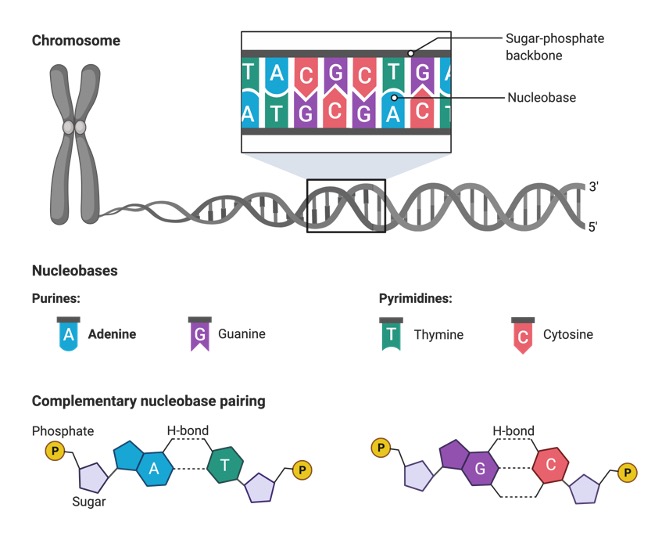Adenosine Diphosphate Definition
Nucleotide is an organic compound, comprising of 3 parts; the phosphate group, sugar moiety of 5 carbon and a nucleobase. Nucleoside and phosphate group combines to form a nucleotide. The five-carbon sugar can be ribose or deoxyribose. A nucleotide can nucleoside monophosphate, when a single phosphate group is bound to the sugar molecule. If two sugar molecules are bound then, it is called as nucleoside diphosphate and similarly nucleoside triphosphate.

Nucleoside can be deoxyribonucleoside or ribonucleoside. On the basis of pentose sugar, thus ribonucleoside consists of ribose sugar with nucleoside and these nucleosides can be adenine, guanine, cytosine and thymine. Similarly, deoxyribonucleoside may have nucleosides like adenine, guanine, cytosine and thymine, in which adenine pairs with thymine and cytosine with guanine. Pyrimidine and purine are two types of nucleoside where pyrimidine is single stranded and purine is double stranded.
Adenosine Diphosphate Structure
Adenosine diphosphate is a nucleoside, which has two phosphate groups and the sugar is ribose. The nucleoside comprises of purine base which is adenine bound to the ribose sugar. The purine base and the pentose sugar backbone forms the nucleoside. To the nucleobase are the two phosphate groups bounded. The attachment of the ribose sugar and the phosphate group is at the 5’ carbon of the sugar.
Adenosine Diphosphate Function
ADP is very vital in processes like glycolysis and photosynthesis. The conversion of ATP results in the formation of ADP, by liberating a phosphate molecule. The liberation of phosphate molecule provides energy for various processes. By addition of a phosphate group ADP can be converted to ATP. This process takes place in oxidative phosphorylation, photophosphorylation and substrate level phosphorylation. APD are located within the platelets, which on interaction with the ADP receptors of platelet, switch on the platelets.
Biological Importance of Adenosine Diphosphate
From ATP, ADP can be obtained. It is a bidirectional process. For ADP to be generated from ATP, a phosphate group is removed by ATPase. On addition of a phosphate group to ADP, it will form ATP. The transformation of ADP to ATP takes place through photosynthesis in plants as light energy is changed to chemical energy, which is in the form of ATP.
The degradation of complex compounds results in providing energy to animals. Through the processes like respiration, glycolysis and fermentation, from glucose, energy can be obtained which is in the form of ATP.
Disintegration of one phosphate bond from ATP can liberate 30.5kJ per mole of ATP. From ADP, adenosine monophosphate (AMP) can be formed by removal of a phosphate molecule. When two molecules of ADP fuses it results in the formation of AMP by the adenylate kinase enzyme.
2ADP → ATP + AMP
Adenosine Diphosphate Citations
- Adenosine diphosphate as a mediator of platelet aggregation in vivo. Adv Exp Med Biol . 1985;192:399-409.
- Platelet aggregation and adenosine diphosphate/adenosine triphosphate receptors: a historical perspective. Semin Thromb Hemost . 2005 Apr;31(2):129-38.
- Adenosine diphosphate and strain sensitivity in myosin motors. Philos Trans R Soc Lond B Biol Sci . 2004 Dec 29;359(1452):1867-77.
- Figures are created with BioRender.com







